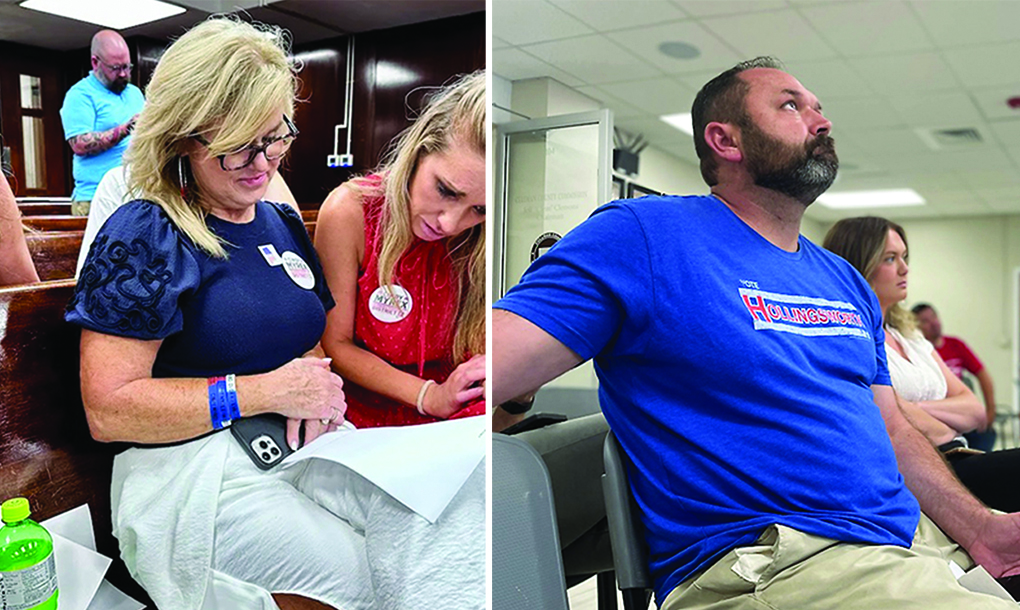Smokestack demolition driver okay after delayed tower collapse
Published 12:36 pm Wednesday, November 25, 2015

- The inner core of the Alabama smokestack was composed of interlaced bricks that were mortared by concrete. The explosions caused it to fall into the central chamber, reinforcing the structure.
PELL CITY, Ala. – An Alabama demolition worker is grateful to be alive after an area historic landmark collapsed on him on Tuesday during a demolition that’s since garnered national media attention.
Following several unsuccessful explosions planned to bring down the Avondale Mills smokestack Tuesday morning, demolition contractor Tim Phifer of Phoenix Services of Alabama was going to use a track hoe to clear away earth and debris at the base of the 158-foot smokestack.
Trending
The audience of thousands reacted as Phifer approached the structure and began chipping away at its base with a piece of heavy equipment.
“That is so stupid,” a woman said in the background. “He’s going get himself killed.”
Phifer removed a large portion of the tower’s brick exterior to reveal an inner support. Made of woven layers of brick mortared by concrete, the core refused to give way — even as the outer layer dwindled to nothing.
Then, with Phifer feet away, the 2.6 million-pound tower fell the opposite direction of the plan and right onto the top of the track hoe — right where Phifer was sitting. Drone footage of the falling smokestack captures the intensity of the distressing crash.
“I just stayed inside the cab and rode it out,” he said, his clothes and skin coated in black soot except in some places where the scrapes could be seen.
Following the crash, demolition team members raced over to Phifer, hoping for signs of life.
Trending
“I remember being halfway across the field just looking at him,” Phifer’s daughter, Allie, recalled. “I had to stop and I was like, ‘I don’t know if he made it and I can’t make it that much closer.'”
Soon after, according to reports, a team member gave a fervent thumbs up as Phifer appeared from the debris. He was removed and assisted by medical personnel and released.
City Manager Brian Muenger said it was Phifer’s decision to move the backhoe into harm’s way and that he was thankful no one sustained serious injury in the accident, but he acknowledged the morning’s result was less than ideal.
“Things definitely didn’t go as planned,” Muenger said afterward.
Phifer said he elected to set charges at the base of the tower after testing the upper regions.
“We didn’t know how the thing was made, but every time we drilled a hole up high it would go into chamber full of ash,” he said “It would been waste put an explosive there, so we tried to blow the bottom out.”
But each charge caused rubble to collect in the base and reinforce the core.
“It just kept filling in,” Phifer said.
When the dust settled, city officials walked the scene, the centerpiece of which was a buried piece of equipment. Chief of police Greg Turley located a section of the core to find out what had put up so much resistance.
“That’s what did it,” Turley said, holding a chunk of bricks that remained perfectly mortared even after the 150-foot tower collapsed on top of them.
As Muenger surveyed the site, he pointed to numerous bricks — the majority, really — that had no mortar attached at all. The smooth surfaces proved what previous studies had suggested. Years of erosion had removed the structure’s adhesive at the top. Even though it was slow to fall, it wasn’t safe, he said.
Regardless of what didn’t go to plan with the demolition, Phifer recognizes his miraculous survival.
“God blesses me,” Phifer told area affiliate WIAT.
The Pell City (Alabama) St. Clair News Aegis provided details to this story.






